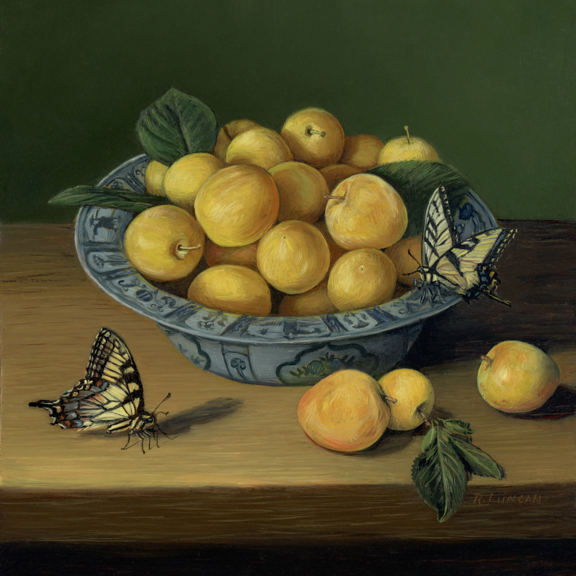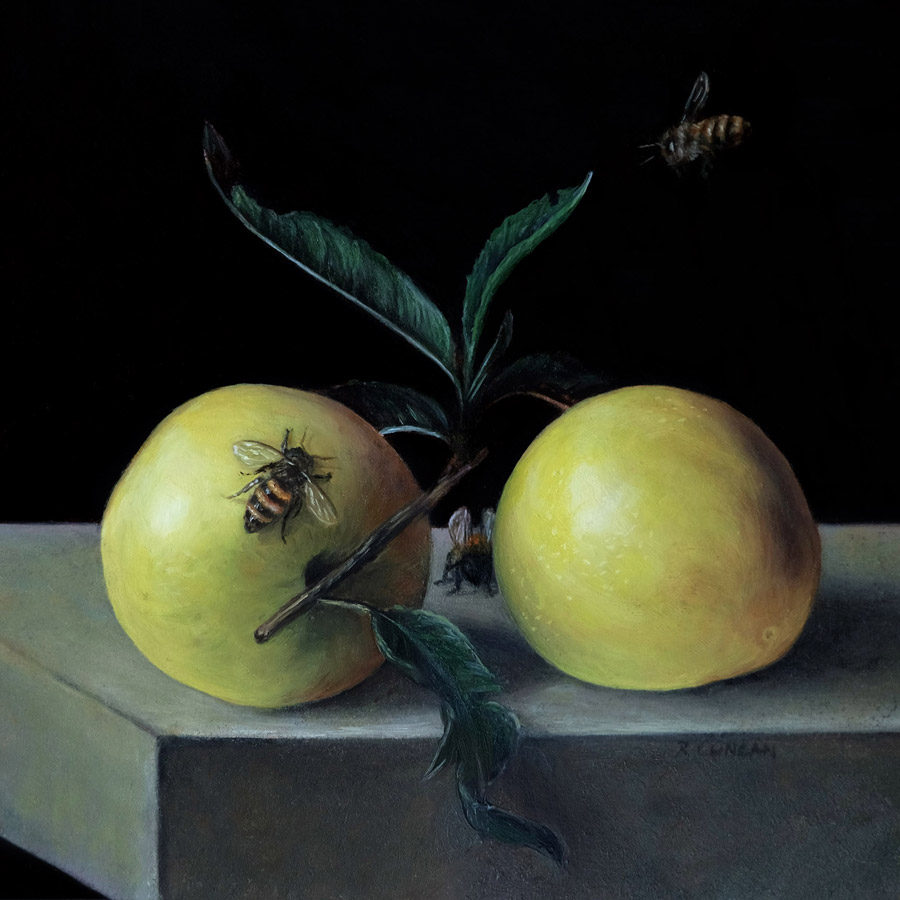Thank goodness I love plums. I have a Shiro Japanese plum tree in my backyard that gives me 2,000 plums most years. I work really hard to use as many as I can, and my refrigerator is comically filled with around 1,000 plums. If you need a plum recipe for anything you can possibly imagine, let me know—I’ve probably tried it! Better yet, stop by if you’re in the neighborhood and I’ll give you some fresh plums or some homemade jam.
I paired the plums with my favorite kind of butterfly, the Tiger Swallowtail, which is a frequent visitor to my garden. I also referenced an image of one of my favorite porcelain bowls in the Seattle Art Museum collection.
It’s surprising to me how happy it makes me to look at these plums, given the countless hours I spend peeling and pitting them. They really are delicious, but it’s also the beauty of the plums themselves. They’re just bursting with life, and the difference in color between the white, powdery bloom and my bright yellow fingerprints just dazzles me.
These little joys are more important than ever right now. Little obstacles and conflicts that used to be so easy to brush off now have a way of feeling insurmountable. Our son is five and is supposed to start Kindergarten on September 7th. We’re worried about the new Delta strain that is more likely to harm children than previous variants of COVID, and we just don’t know what to do. It’s not always possible, but I’ll give you the advice I’m trying to give myself: give yourself some slack and some time to just relax and breathe.
I hope this painting inspires you to go outside, close your eyes to all your troubles and enjoy a bite of summer. 
Visit my Monthly Miniatures page to see them all.

Handmade Dutch Ripple Frame
Each frame for this series of miniatures is hand made by Tom Matthews in New York. They feature carved ripples, made in the dutch tradion and take about a month to complete.

